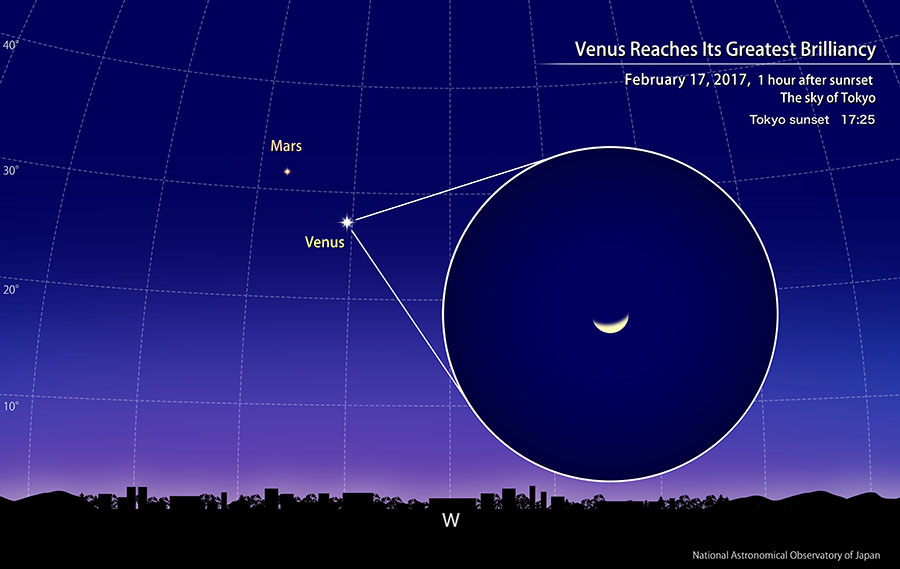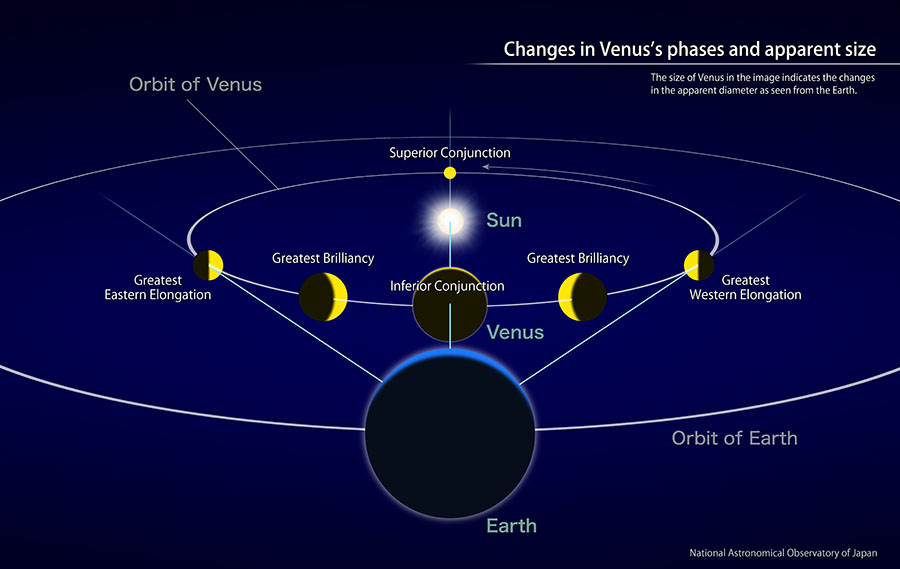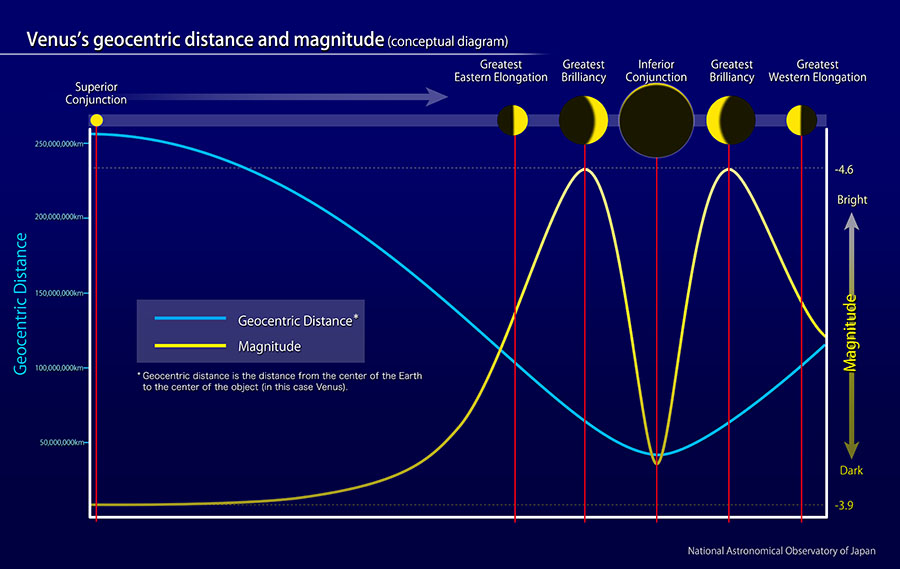Venus Reaches Its Greatest Brilliancy (February, 2017)

Let’s Find the First Star!
Shining the brightest in the western sky dyed in the colors of sunset, Venus reaches its greatest brilliancy on the 17th. During these days its brightness reaches up to -4.6 magnitude, which is about 170 times brighter than a 1st magnitude star. Around these days, if you find the first star, it might be Venus because the planet shines brightly after sunset. During the month of February, its brightness continues to be -4.6 magnitude, which is suitable for observation.
Using a telescope, Venus can be observed in crescent phase like the crescent moon. Venus exhibits phases like those of the Moon depending on the relative positions of Venus, the Earth, and the Sun.

How does Venus change its phases? Venus orbits around the Sun inside of Earth’s orbit. As shown in the image above, when Venus is at superior conjunction, located on the opposite side of the Sun, the distance between Venus and the Earth is large, so Venus looks small as seen from the Earth. Venus shines in a circle shape like the full moon, because the sunlit side of Venus faces the Earth. (Actually, the Sun and Venus are in the same direction, so you cannot observe Venus.) As it orbits, Venus gets closer to the Earth, gradually becoming bigger. Furthermore, the shadowed part of the surface (Venus’s night side) begins to face the Earth, so you can observe Venus waning like the Moon. When Venus appears furthest from the Sun, called its greatest elongation, it looks like a half moon. When it appears its brightest at greatest brilliancy, its shape looks like a crescent moon. When it is located in front of the Sun at inferior conjunction, it disappears like the new moon.

The light-blue curve in the diagram shows the distance between the Earth and Venus (geocentric distance). The yellow curve represents the brightness (magnitude) change of Venus. Venus’s brightness changes not only according to its apparent size that varies with the distance from the Earth, but also with the fraction of Venus illuminated. When it is at superior conjunction, Venus is about -3.9 magnitude, but when it is at greatest brilliancy, it generally reaches up to -4.6 magnitude. When it is at inferior conjunction, its shadowed side faces the Earth, so it becomes dark temporally. The waxing and waning of Venus is repeated about every one year and seven months.
On June 7, 2016, it was at superior conjunction. Then, at the beginning of 2017, it is on the east side of the Sun, shining in the western sky as the Evening Star after sunset. On January 12, it is at greatest eastern elongation and on February 17, it is at greatest brilliancy. After that, it comes closer to the Earth and is at inferior conjunction on March 25. After inferior conjunction, it goes to the western side of the Sun and shines as the Morning Star in the eastern sky before dawn. On April 30, it reaches greatest brilliancy again and on June 3, it is at greatest western elongation. As Venus moves away from the Earth, its apparent brightness gradually becomes darker.
The diagram is a conceptual diagram. The distance between the Earth and Venus before and after inferior conjunction is different, so the magnitudes of the greatest brilliancies are different. The magnitudes of the greatest brilliancies are also a little different for each 1-year-7-month cycle.
Reference: Ephemeris Computation Office
You can look up the rising and setting times for the Sun and the Moon, and the phases of the Moon in the “Koyomi Station” of the NAOJ Ephemeris Computation Office. You can find the appearance of the Moon and planets as seen from a typical city under “Sky Viewer.”